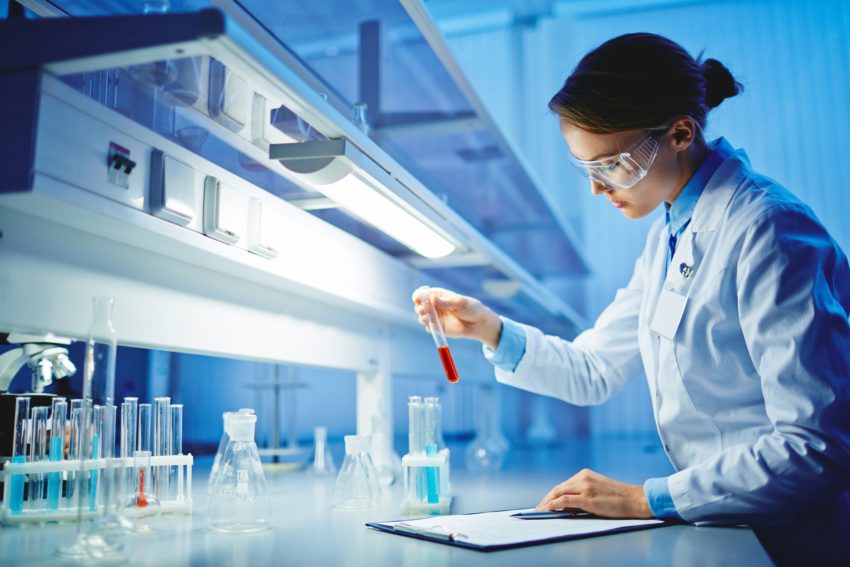
Mobile Phase: Know what you are putting into your HPLC
Posted By admin / 25th May, 2018
Choosing the mobile phase you use is one of the most important decisions you make in determining the outcome of your HPLC analysis. Second only to the column, the mobile phase type and its polarity and quality greatly affect the efficiency and accuracy of your results. For something this important, anyone using an HPLC, whether directly or as part of a manufacturing/release process, should understand what mobile phase is and how it works.
High-performance liquid chromatography, also called high-pressure liquid chromatography (HPLC), is a chromatographic method used to separate a mixture of compounds in analytical chemistry and biochemistry to identify, quantify, or purify the individual components of a test sample, and to test for non-volatile compounds within that sample. Sodium chloride (common salt) and silver nitrate are some common examples of non-volatile compounds.
The purpose of mobile phase is to move the sample through the column and separate the components of the sample by slowing them down. These components are separated by size, shape, charge, polarity, hydrophobic state, and binding capacity and are captured in the column. The separation occurs when the sample “slows down” compared to the mobile phase and the individual components that begin to separate from the mobile phase are detected and quantified.
There is an indefinite array of mobile phases, but most can be categorized into two different types:
- Normal Phase, in which the column is more polar than the mobile phase, and;
- Reverse Phase, in which the column is less polar than the mobile phase
Considering the target chemical components being analyzed and the sample characteristics, one mobile phase or a combination of phases may be used to generate the optimal resolution and results.
After type, the second defining part of the mobile phase is the components that are mixed together to create it–its formulation. Regardless of the type of mobile phase used (normal or reverse), the quality and consistency of the mobile phase formulation is crucial for analytical accuracy and precision.
Typically, the mobile phase consists of a base solvent (normal phase) or water (reverse phase) and one or more salts, acids, and buffers. Certain characteristics of the mobile phase, including pH, concentrations, purity, etc., can alter the effectiveness of the mobile phase and increase or decrease the resolution. The addition of these components is therefore highly purposeful. For example, buffers can help keep the pH consistent, thus regulating the hydrophobic characteristics of the analyte, while acids can bolster the effectiveness of the column and detectors in the HPLC, allowing for greater resolution and different retention times.
pH plays a crucial role in determining retention and selectivity, as well as in controlling the accuracy and precision of a method. There is no universal “best” pH for mobile phase, since the sample characteristics and the desired analytes play a factor in determining the ideal pH for a run. What is universal is the necessity of having a consistent and accurate pH that will remain at the required value for the usable life of the mobile phase. This can be minutes or hours (the time to run a sample set through the HPLC), all the way up to 6 months or longer in certain closed systems. In cases where the sample could affect the pH during a typical run, buffer should be included in the make-up of the mobile phase.
Other conditions need to be considered with respect to how they could affect the pH (e.g., ion exchange with chemicals in the ambient lab air) and controls should be used to minimize these effects. If the pH shifts up or down, the results will most likely vary.
When adding acids, buffers, salts, solvents, and/or water to make mobile phase, it is important to consider purity levels to ensure no additional compounds will contaminate the mobile phase and disrupt the desired analytical results. Indeed, impurities and particles in the components can affect even more than just results. These contaminants can also shorten the life of the equipment by clogging the column, blocking filters, and leaving artifacts in the lines. This will increase maintenance costs, disrupt sample throughput, and decrease efficiencies.
Common practices to ensure higher purity chemicals consist of filtering solvents with a 0.2-µm (or smaller) filter to remove particulates; degassing the mobile phase to minimize microbial growth conditions; and conditioning water with one or more of the following: ion exchange, reverse osmosis, carbon filtration, and/or UV sterilization. These processes help eliminate some of the more common issues when it comes to mobile phase purity.
Choosing the best mobile phase for your operation is more than just buying something off the shelf and running it through the machine, since problems may arise when the incorrect mobile phase is used. By taking these points into consideration and employing some best practices for laboratory safety, quality control, and housekeeping, you should be able to minimize the potential of using a problematic mobile phase and increase overall laboratory efficiencies.
Mobile phases are certainly more complicated than they seem. As a critical part of HPLC testing, it is vital that you take the time to understand the formulation and quality of the mobile phase being used and how it will impact your samples, products, and processes.


